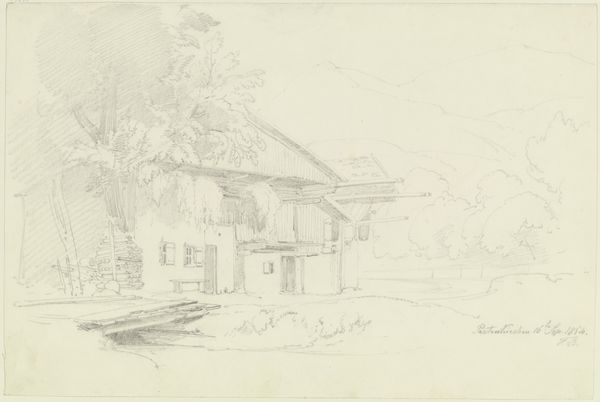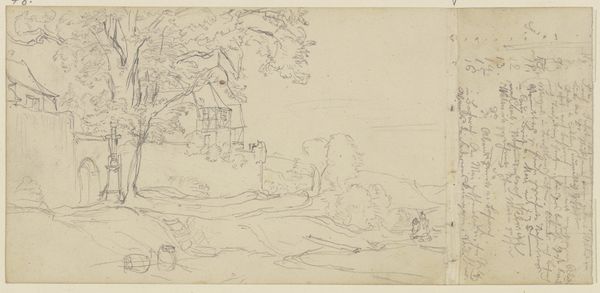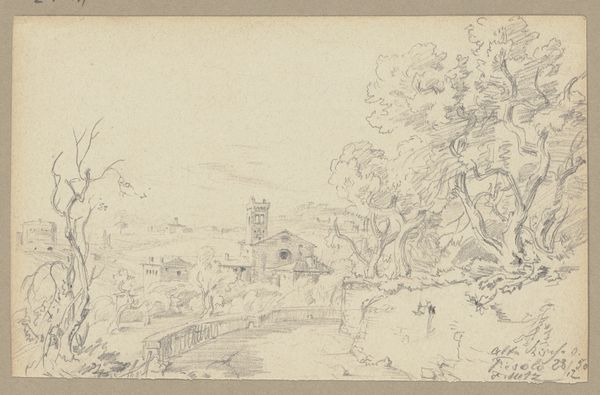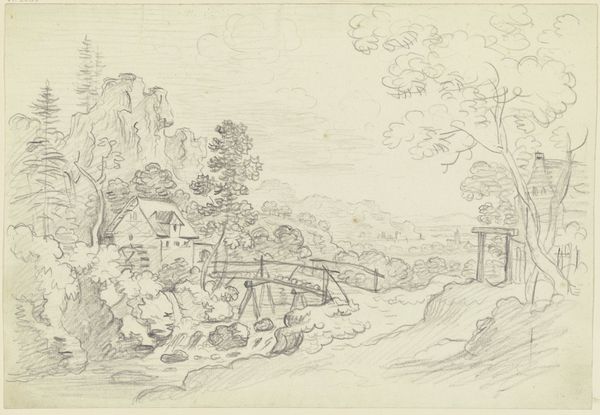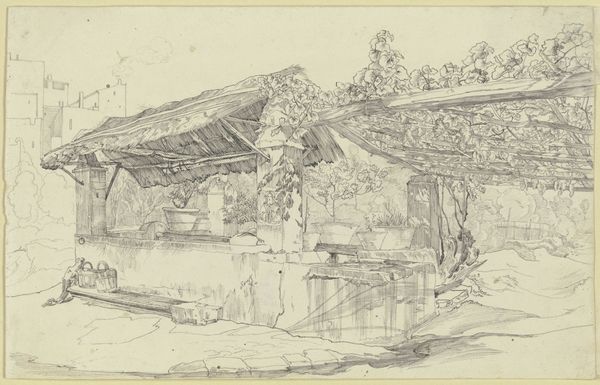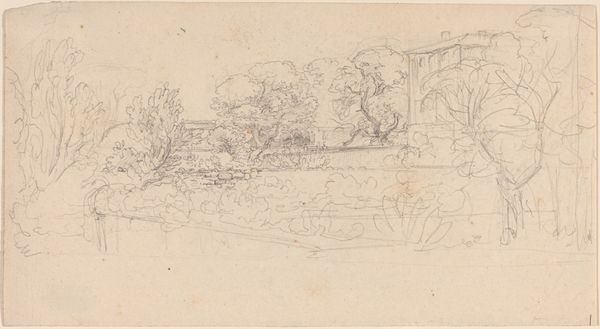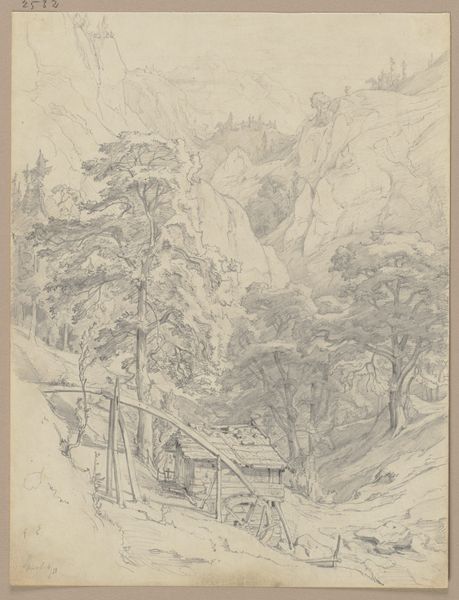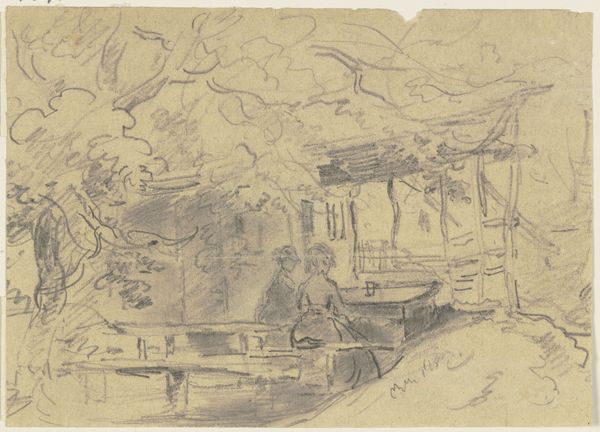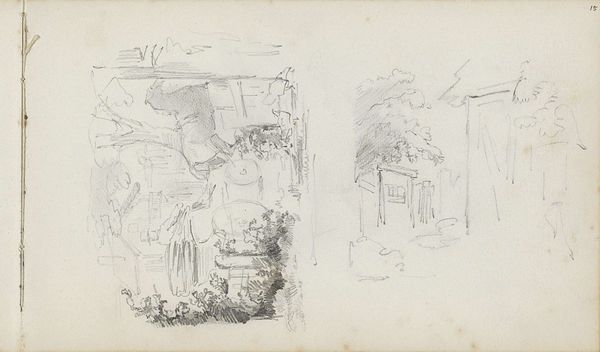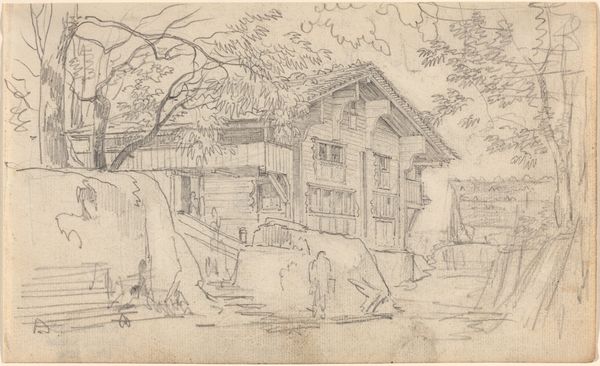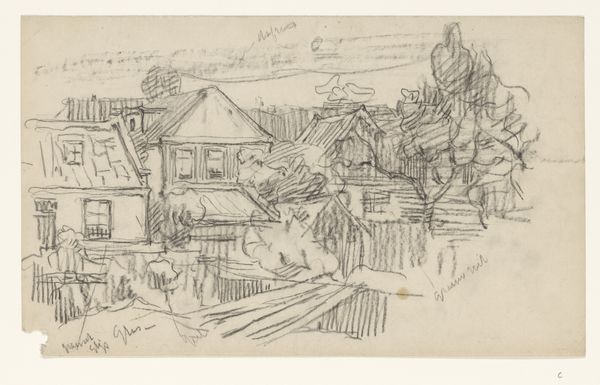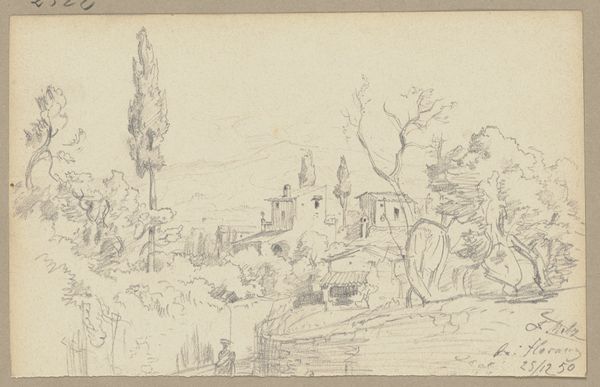
Copyright: Public Domain
Wilhelm Busch made this pencil drawing, called 'Farmhouse Behind a Barrier', during his lifetime in Germany in the 19th century. Busch is known for his satirical and humorous illustrated stories and his critical perspective is also evident in this drawing. The barrier in the foreground divides the space and seems to prevent access to the farmhouse. In 19th-century Germany, barriers were often used to mark territorial boundaries, or to control access to private property and forests. Busch's drawing might be a comment on the increasing privatization of land and resources. The location of a farmhouse behind a barrier could symbolize the social and economic divisions in German society at the time. It seems that Busch’s social commentary is not only visible in his better known satirical work, but it is also present in his drawings of landscapes. Art historians use a range of resources to understand the social context of artworks like this, like historical documents, literature, and studies of the economic and political structures of the time.
Comments
No comments
Be the first to comment and join the conversation on the ultimate creative platform.
